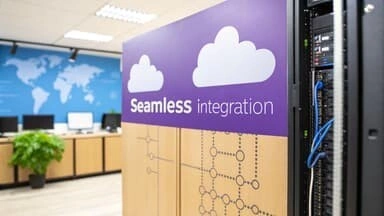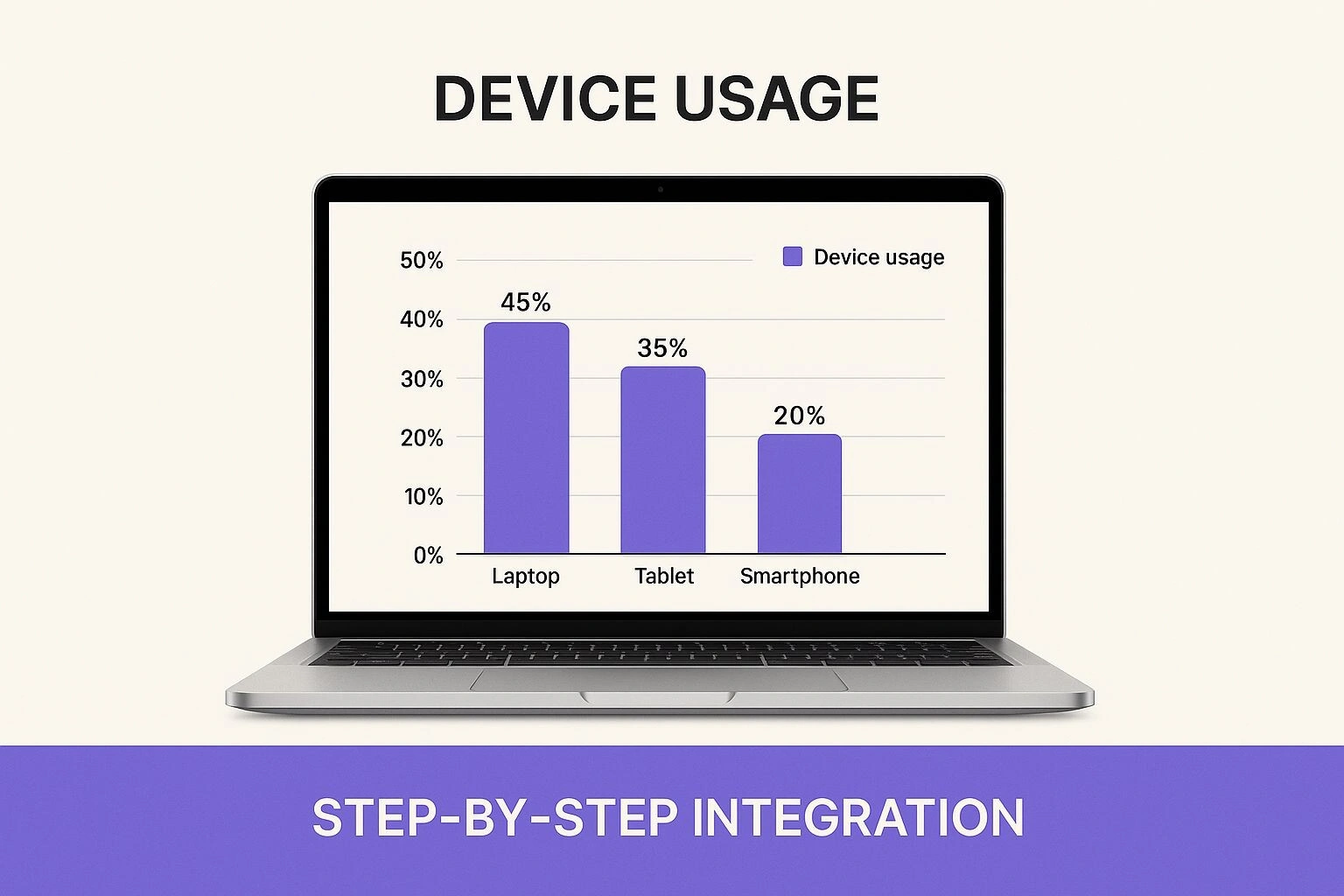Top System Integration Services in Australia | Complete Guide
Discover expert system integration services in Australia. Enhance your business efficiency today. Learn more about our top-rated solutions!

Understanding System Integration Services In Australia
System integration services play a vital role for Australian businesses seeking to optimise operations and enhance competitiveness.These services essentially bridge the gap between disparate software and hardware systems, enabling seamless communication and data sharing. This interconnectedness breaks down information silos, allowing departments across the organisation – from sales and marketing to finance and operations – to access and utilise the same real-time data.This fosters a more collaborative environment, leading to improved decision-making and increased overall efficiency.
Why Is System Integration Important for Australian Businesses?
Consider a retail business operating with separate systems for online orders, inventory management, and customer relationship management (CRM).Without system integration, managing these disparate systems becomes complex and inefficient. Staff would have to manually transfer data, increasing the likelihood of errors and creating delays.A robust system integration solution, however, automates these processes. When a customer places an online order, the inventory system updates instantly, and the CRM captures the purchase, creating a smoother, more efficient workflow.
System integration also provides Australian businesses with valuable data insights. By connecting various systems, businesses gain a comprehensive overview of their operations, allowing them to identify key trends and make informed, data-driven decisions.In today’s competitive landscape, this access to accurate, real-time data is paramount for success.
This growing need is reflected in the Australian IT services market. Valued at USD 30.1 billion in 2024, the market is projected to reach USD 79.53 billion by 2033, demonstrating a significant CAGR of 10.6%.This expansion highlights the rising demand for professional services like system integration and IT consulting.For a deeper dive into these market statistics, explore this topic further.
Key Benefits of System Integration
System integration offers several key advantages for Australian businesses:
- Improved Efficiency: Automating data flow eliminates manual processes and minimises errors.
- Enhanced Collaboration: Information sharing across departments fosters better communication and teamwork.
- Better Decision-Making: Real-time data access enables strategic and data-informed decisions.
- Reduced Costs:Process automation and increased efficiency contribute to lower operational costs.
- Increased Agility: Integrated systems empower businesses to adapt swiftly to market shifts and customer needs.
- Scalability:System integration solutions are designed to scale and grow with the business.
By unifying disparate systems and facilitating seamless data flow, system integration services equip Australian businesses to optimize operations, enhance their competitive edge, and achieve sustainable growth.This interconnected foundation is critical for navigating the complex technological landscape and meeting the demands of today’s dynamic business world.
Market Opportunities Driving Australian Integration Growth

The Australian business landscape presents significant opportunities for organisations seeking modernisation through system integration services.This vibrant market is propelled by several key factors.These include the increasing adoption of cloud technologies, the growth of the Internet of Things (IoT), and the pressing need to update legacy systems.Together, these factors create a significant growth opportunity within the integration sector.
Key Sectors Leading the Integration Charge
Specific sectors in Australia are driving this wave of integration. Telecommunications companies, for example, face the complexities of 5G rollout and increasing demand for seamless connectivity.This requires sophisticated system integration to manage network infrastructure and provide reliable services.
Government agencies also face pressure to digitize services and improve citizen engagement. This fuels the demand for integration solutions that connect disparate departments and systems.Retail businesses are also using integration to improve customer experience, personalize offerings, and optimize supply chains.
Furthermore, the increasing complexity of IT environments combined with the shift toward hybrid and multi-cloud infrastructure intensifies the need for robust integration services.These services help manage the intricacies of various platforms and ensure smooth data flow across an organization. For more information on the benefits of integration, see: How system integrations drive business growth.
Emerging Technologies and Integration Growth
Emerging technologies like edge computing are transforming integration requirements. As data processing moves closer to the source, businesses require integration solutions capable of real-time data management and analysis at the network edge.This presents new opportunities for businesses specializing in edge integration services.
The Australian system integration services market is projected to experience substantial growth between 2025 and 2031.This growth is influenced by various factors, including complex IT environments, hybrid cloud adoption, and the necessity of legacy system modernization.Niche markets like IoT integration are expected to demonstrate even more rapid expansion, with a projected CAGR of 29.7% between 2025 and 2030.For a deeper dive into these statistics, see: Find more detailed statistics here.
Strategic Positioning for Success
For Australian businesses considering system integration, understanding market timing and investment priorities is paramount.The present moment represents a crucial opportunity to invest in solutions that can future-proof operations and provide the agility needed to thrive in a competitive landscape.
Strategic positioning is key.Businesses should focus on building adaptable integration architectures that can adjust to evolving business needs and new technologies. This proactive approach ensures integration investments continue to deliver long-term value.
Forces Shaping Modern Integration Strategies
Modern Australian businesses face mounting pressure to adapt and innovate within a constantly shifting technological landscape.This has resulted in a surge in demand for system integration services, as businesses recognize their vital role in linking disparate systems and unlocking valuable data insights. This section analyzes the key forces shaping modern integration strategies within the Australian market.
The Rise of Hybrid and Multi-Cloud Environments
A major factor driving integration demand is the increasing prevalence of hybrid and multi-cloud environments.Many Australian organisations utilise a mix of on-premises infrastructure, private clouds, and public cloud services like AWS or Microsoft Azure. System integration services must seamlessly connect these diverse environments to ensure efficient data flow and application interoperability.
IoT, Edge Computing, and AI
The rise of the Internet of Things (IoT) and edge computing also significantly contributes to the demand for robust system integration solutions. With numerous devices generating vast amounts of data at the network edge, businesses require effective methods to collect, process, and analyze this information.System integration bridges this gap, connecting IoT devices to central systems and enabling real-time insights.Furthermore, integrating AI and machine learning into business processes requires seamless integration between AI platforms and existing systems, further emphasizing the importance of system integration services.
Recent years have demonstrated that system integration services are crucial for Australian enterprises navigating the challenges posed by rapid technology adoption and evolving business needs. Key drivers within Australia include integrating hybrid and multi-cloud environments, the increased deployment of IoT and edge computing, and supporting AI and machine learning implementations. These factors are prompting businesses to invest in consulting and integration services that can bridge legacy and modern systems, streamline processes, and bolster cybersecurity. Learn more about this research here.
Enhanced Security Demands
Cybersecurity is now paramount for Australian businesses.With increased data sharing across systems, ensuring data security and compliance with regulations like the Privacy Act 1988 is more critical than ever. Modern integration strategies must prioritize security, implementing robust encryption, access controls, and threat detection mechanisms.
Balancing Innovation and Stability
A key challenge for many Australian businesses is balancing the need for innovation with maintaining stable and reliable operations. System integration services can help manage this balance by ensuring new technologies are integrated smoothly without disrupting existing processes.This allows organizations to embrace innovation without jeopardizing stability. You might be interested in: How to measure ROI on system integration services.
By understanding these driving forces, Australian businesses can develop integration strategies that not only address current challenges but also establish a foundation for future growth and success. Selecting the right system integration approach is therefore a critical decision.
Choosing The Right Integration Approach For Your Business
Selecting the right system integration services is crucial for Australian businesses seeking to optimize operations and enhance competitiveness. The ideal approach hinges on individual business needs, current IT infrastructure, and future objectives. This requires a thorough understanding of the various integration approaches and their respective advantages.
Understanding Different Integration Approaches
Several key integration approaches are available for businesses to consider:
-
Horizontal Integration: This method connects similar systems across different departments or business units.Integrating CRM CRM systems across sales, marketing, and customer service, for example, provides a unified customer view and enhances communication. This approach streamlines specific business processes and is often less complex than other integration types.
-
Vertical Integration: This approach integrates systems across different business levels, from front-end applications to back-end databases.Connecting an e-commerce platform with inventory management and accounting systems creates a streamlined flow of information, from order placement to financial reporting. While more complex than horizontal integration, it offers significant efficiency gains.
-
Star Integration (Point-to-Point): This approach directly connects each system to every other system with which it interacts.Visualize a central hub with spokes radiating outwards.This is often the quickest approach for smaller integrations, but managing it can become challenging as the number of systems increases.It is best suited for smaller setups.
-
Data Integration: This approach focuses on combining data from disparate sources into a single, unified view. For Australian businesses utilizing various databases, this is essential for extracting valuable insights. Consolidating sales data from various channels into a central data warehouse for analysis, for instance, enables more informed decision-making.
-
Application Integration: This approach connects different software applications, enabling seamless data exchange and communication. This is critical for businesses relying on multiple applications for daily operations.Integrating a CRM with a marketing automation platform, for example, streamlines lead nurturing and campaign management.
-
Cloud Integration: As cloud adoption continues to grow, integrating cloud-based applications with existing on-premise systems is becoming increasingly important. This allows Australian businesses to transition smoothly to modern infrastructure and embrace cloud services. Integrating a cloud-based ERP ERP solution with on-premise manufacturing systems, for example, ensures efficient resource planning and control.
To help visualize these different approaches and their respective applications, the following table provides a comparative overview.
To help visualize these different approaches and their respective applications, the following table provides a comparative overview for Australian Businesses.
Comparison Of System Integration Approaches
A detailed comparison of different integration methodologies, their use cases, complexity levels, and typical implementation timeframes for Australian businesses
| Integration Type | Best Use Case | Complexity Level | Implementation Time | Typical Cost Range |
|---|---|---|---|---|
| Horizontal Integration | Connecting CRM systems across departments | Low to Medium | 2-6 months | $20,000 – $100,000 |
| Vertical Integration | Linking e-commerce platforms with backend systems | Medium to High | 6-12 months | $50,000 – $250,000 |
| Star Integration (Point-to-Point) | Small-scale integrations between a few systems | Low | 1-3 months | $10,000 – $50,000 |
| Data Integration | Consolidating sales data into a central warehouse | Medium | 3-9 months | $30,000 – $150,000 |
| Application Integration | Connecting CRM with marketing automation platforms | Low to Medium | 2-6 months | $20,000 – $100,000 |
| Cloud Integration | Integrating cloud ERP with on-premise systems | Medium to High | 6-12 months | $50,000 – $250,000 |
This table highlights the varied complexities and costs associated with different integration approaches.Choosing the right approach necessitates careful consideration of business needs and available resources.
Step-By-Step Visualizing Your System Integration Approach
The following infographic demonstrates the step-by-step approach required for system integration services:

This infographic visualizes a systematic approach to integration, highlighting the process from assessment to deployment.It emphasizes the importance of meticulous planning and step-by-step execution for optimized system connectivity.
Choosing the Best Fit
The optimal integration approach depends on your business’s specific circumstances. Factors such as budget, technical expertise, and long-term goals will influence the final decision. Consulting with experienced system integration providers in Australia is crucial for selecting the right path. This ensures a strategy aligned with your unique objectives, establishes a foundation for future growth, and positions your business for continued success.
Finding The Right Integration Partner In Australia
Choosing the right system integration partner is critical for Australian businesses seeking effective system integration services.A strong partnership can mean the difference between a seamless integration and a costly, disruptive one.This requires careful evaluation of potential partners based on several key criteria.
Essential Criteria For Evaluating Integration Partners
When selecting an integration partner, consider their platform integration expertise. A helpful resource for understanding integrations is available from FlowGent AI. Beyond platform knowledge, examine their experience with similar projects.Have they worked with businesses in your industry or handled integrations of a similar scale?A proven track record in relevant areas significantly increases the chances of a successful outcome.
Local market knowledge is also crucial. An Australian-based partner understands the unique challenges and opportunities of the Australian business environment.Familiarity with relevant regulations and compliance requirements ensures your integration adheres to local standards.
- Technical Expertise: Assess the partner’s skills in relevant technologies, including cloud platforms, APIs, and the specific software your business utilises.
- Industry Experience:Prioritise partners with experience in your specific sector, demonstrating an understanding of your business processes and challenges.
- Local Market Knowledge:An Australian partner understands local regulations and business practices.
- Ongoing Support: Confirm the partner provides ongoing support and maintenance post-integration.
Due Diligence And Service Level Agreements
Thorough due diligence is essential. This includes researching the partner’s reputation, reviewing client testimonials, and verifying their financial stability.A stable partner is less likely to experience disruptions that could negatively impact your project.
Carefully review service level agreements (SLAs). These agreements should clearly define responsibilities, performance guarantees, and support procedures.A well-defined SLA protects your interests and ensures accountability.
- Reputation Check: Research the partner’s reputation through online reviews and industry contacts.
- Client Testimonials:Gather client testimonials to gain insights into their experiences.
- Financial Stability:Verify the partner’s financial health to ensure long-term viability.
- SLA Review: Carefully examine the SLA to ensure it aligns with your business needs and risk tolerance.
Cultural Fit And Communication
Beyond technical capabilities, consider cultural fit and communication style. A partner who understands your business culture and communicates effectively fosters a stronger collaborative relationship.Open and transparent communication is essential for addressing challenges and keeping the project on track.
- Cultural Alignment: Choose a partner whose values and work style align with your own.
- Communication Style: Ensure the partner communicates clearly and proactively throughout the project lifecycle.
Scalability And Future Growth
Finally, choose a partner who can scale with your business.As your needs evolve, your integration partner should be able to handle increasing complexity and data volumes. This requires a flexible approach and the ability to adapt to changing business requirements.
Choosing the right system integration partner is a significant investment. By carefully evaluating potential partners and prioritizing these key criteria, Australian businesses can select a partner who will be a valuable asset.This strategic partnership will ensure successful system integrations, enabling efficient operations, improved decision-making, and a stronger competitive edge in the Australian marketplace.
Implementation Strategies That Work In Australian Business
Successfully implementing system integration services requires a structured approach, especially in the dynamic Australian business landscape. This section outlines key implementation phases for a smooth transition and measurable outcomes. Choosing the right Australian system integration partner requires careful evaluation of expertise, experience, and alignment with your specific business objectives. For more on the Australian business environment, see: Visit Australia.
Planning and Stakeholder Alignment
The foundation of any successful integration project is meticulous planning.This involves clearly defining the project’s scope, objectives, and desired outcomes.Gaining buy-in from key stakeholders across the organization is equally crucial. This ensures everyone understands and supports the project’s aims.
This initial phase also includes developing realistic timelines and budgets.Accurate estimations are vital for managing expectations and maintaining project momentum.This careful upfront planning mitigates potential obstacles and sets the stage for a smoother implementation.
Testing and Deployment
Thorough testing is paramount before deploying any integrated system. This ensures effective inter-system communication and seamless data flow.Testing should encompass various scenarios, including normal operations, peak loads, and potential error conditions.This rigorous testing process helps identify and resolve any issues before they impact the live environment.
Following testing, the deployment phase begins. A phased rollout is often the preferred approach, allowing for a controlled transition and minimizing disruption to ongoing operations.This measured approach also provides opportunities to address unforeseen problems effectively.
Optimization and Ongoing Support
The work doesn’t end after successful deployment. Ongoing optimization is key to maximizing the benefits of system integration services.This includes monitoring system performance, identifying improvement areas, and making necessary adjustments.Continuous optimization ensures the system adapts to evolving business needs.
A reliable support system is essential for addressing any technical issues that may arise. This ensures the integrated system functions optimally and delivers the expected value over time.For more information, consider reviewing: Best practices for system integrations.
Managing Change Effectively
Implementing system integration services often involves significant changes to existing workflows and processes. Effective change management is critical for minimizing resistance and ensuring a smooth transition for all staff. This includes clear communication, adequate training, and proactive address of any concerns.
By focusing on these key phases, Australian businesses can ensure their integration projects deliver tangible value. This structured approach, combined with proactive change management and continuous optimization, maximizes the benefits of system integration, setting the stage for long-term success and building a strong foundation for future growth and adaptation.
Building Integration Strategies That Evolve With Your Business

For Australian businesses, designing an integration strategy that can adapt to future changes is crucial.This involves creating systems that don’t become outdated but instead evolve alongside emerging technologies and shifting business needs.Forward-thinking Australian organizations are implementing flexible integration architectures to prepare for future growth, technology adoption, and changing market dynamics.
The Power of API-First Approaches and Microservices
A key element in building an adaptable integration strategy is the API-first approach. This involves designing APIs as the primary interface for interactions between systems.This approach promotes flexibility and reusability, simplifying the integration of new systems and services when required.It’s akin to building with Lego blocks: each API acts as a self-contained unit, easily connected and reconfigured.
Microservices architectures further enhance system flexibility. By deconstructing applications into smaller, independent services, businesses can update and scale individual components without affecting the entire system. This modularity makes it easier to adapt to evolving requirements and adopt new technologies incrementally.
Cloud-Native Solutions and Integration Frameworks
Cloud-native solutions, offered by platforms like AWS and Azure, are also essential for building resilient integration frameworks.These platforms provide pre-built connectors and services that streamline integration with a range of systems and applications, reducing the need for complex custom coding. This results in faster and more cost-effective integration.
Creating effective integration frameworks requires careful consideration of both present and future needs. This involves selecting appropriate technologies, establishing clear governance procedures, and implementing robust monitoring and management tools.
Emerging Trends: Edge Computing, AI, and Real-Time Data
Emerging trends, such as edge computing integration, AI-powered automation, and real-time data processing, are significantly influencing integration strategies. Edge computing necessitates integrating systems at the network edge, closer to the data source.AI can automate integration processes and improve data analysis. Real-time data processing requires systems capable of handling high-velocity data streams.
These advancements demand a proactive approach. Businesses must continually evaluate and adjust their integration strategies to incorporate these new technologies. This involves investing in training and development for IT teams and embracing continuous improvement.
Balancing Present Needs With Future Flexibility
Balancing current requirements with future adaptability requires careful planning and thought.Meeting immediate business objectives is essential, but organisations must also consider the long-term implications of their integration choices.
This means opting for scalable solutions that can adapt to future growth and emerging technologies. It also involves investing in comprehensive documentation and training to ensure the system can be maintained and adapted over time.
Integration Technology Readiness Assessment
To evaluate your organization’s preparedness for different integration technologies and their potential business effects, consider the following table:
The table below, “Integration Technology Readiness Assessment,” presents a framework for evaluating your organization’s readiness for different integration technologies and their anticipated impact on business operations.
| Technology | Readiness Level | Implementation Timeline | Business Impact | Investment Required |
|---|---|---|---|---|
| API-First Approach | Assess current API usage and strategy | 3-6 months for initial implementation | Improved agility and scalability | Moderate to high |
| Microservices Architecture | Evaluate current application architecture | 6-12 months for migration | Increased flexibility and resilience | High |
| Cloud-Native Solutions | Assess cloud adoption and infrastructure | 3-9 months for integration | Enhanced scalability and cost-efficiency | Moderate |
| Edge Computing Integration | Evaluate edge computing needs and infrastructure | 6-12 months for implementation | Real-time data processing and insights | High |
| AI-Powered Automation | Assess AI capabilities and data readiness | 9-18 months for implementation | Automated integration processes and enhanced analysis | High |
This framework allows for a thorough assessment of how different technologies can be incorporated into existing systems and their predicted influence on business operations.It highlights the varying implementation timelines and investment levels associated with each technology, allowing organizations to prioritize their integration efforts strategically.
By proactively embracing emerging technologies, Australian businesses can build integration strategies that foster innovation and support long-term success. While these strategies require careful planning and investment, they ultimately deliver a greater return on investment and ensure continued value as both the business and technology landscape evolve.
Ready to transform your business through effective system integration?Visit Osher Digital to explore tailored solutions designed for Australian businesses.
Jump to a section
Ready to streamline your operations?
Get in touch for a free consultation to see how we can streamline your operations and increase your productivity.